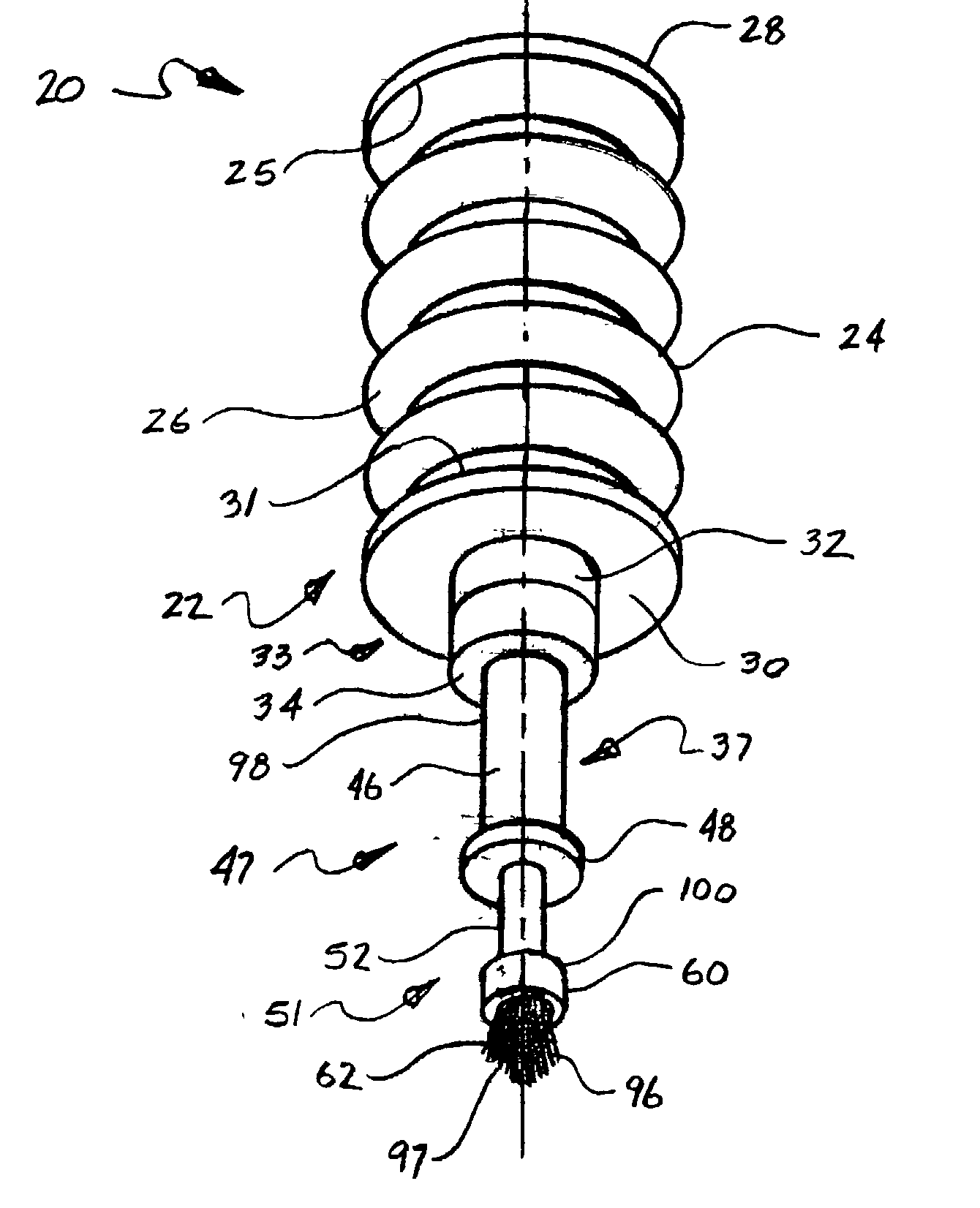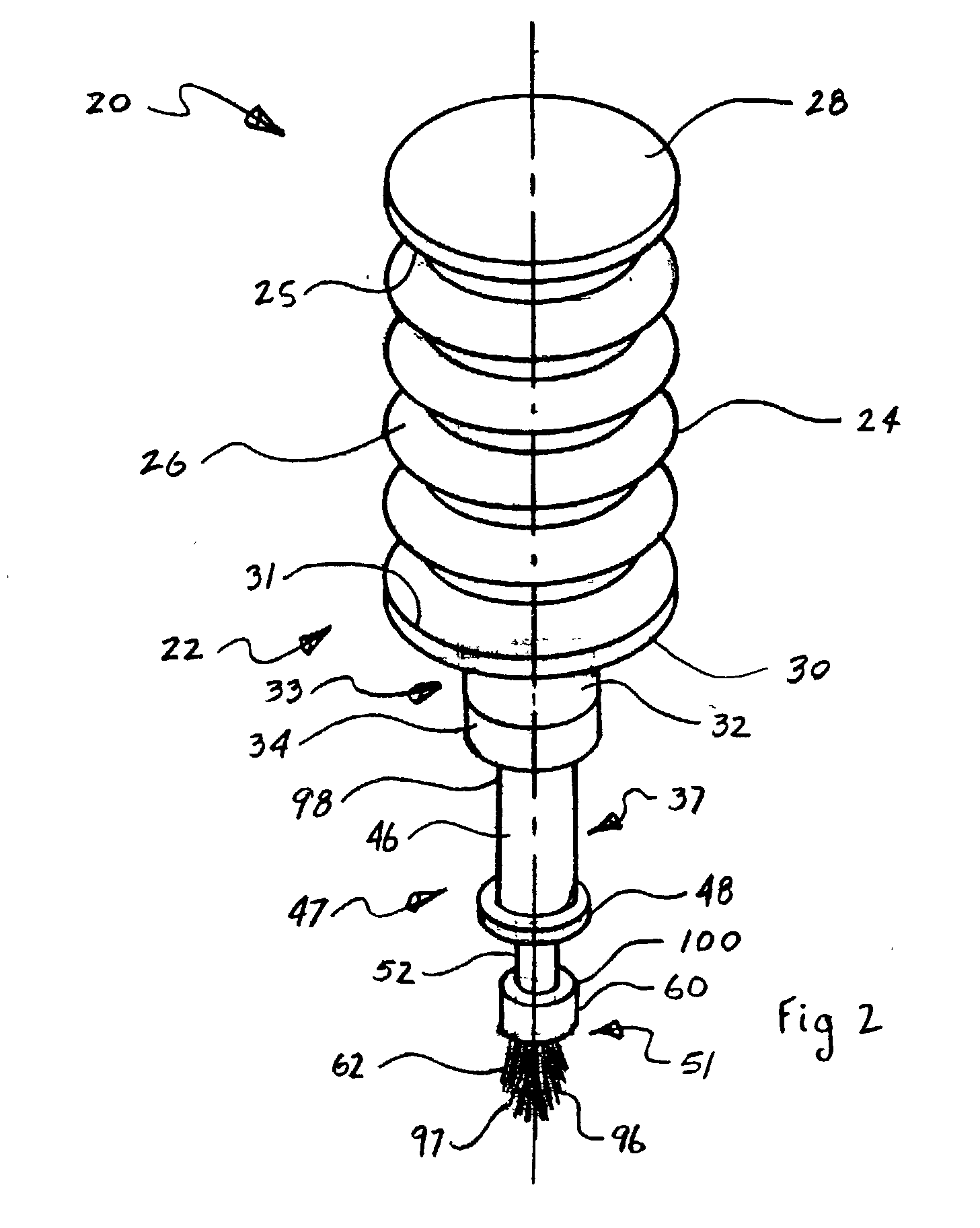Fluid dispenser
a dispenser and fluid technology, applied in the field of fluid dispensers, can solve the problems of fluid dispensers that cannot be used, inoperable, waste of fluid,
- Summary
- Abstract
- Description
- Claims
- Application Information
AI Technical Summary
Benefits of technology
Problems solved by technology
Method used
Image
Examples
Embodiment Construction
[0098] With initial reference to FIGS. 1 and 2, FIG. 1 shows a perspective view of the fluid dispenser 20 assembly from the applicator 47 side and FIG. 2 shows a perspective view of the fluid dispenser assembly 20 from the first end sealing cap 28 side. The fluid dispenser 20 is designed to allow the user to manually apply a selected fluid to a desired location by the user and comprises two major elements, being a reservoir assembly 22 and the applicator assembly 47. The reservoir assembly 22 that is able to contain the selected fluid includes a resilient body portion 24 that has a resilient body portion first end 25 and a resilient body portion second end 31. The reservoir assembly 22 also includes a first end sealing cap 28 and a second end sealing cap assembly 33 that includes a second end-sealing cap 30 that acts in conjunction with the resilient body portion 24 to define a reservoir interior that is not shown in FIGS. 1 and 2. The resilient body portion 24 has a bellows 26 that...
PUM
 Login to View More
Login to View More Abstract
Description
Claims
Application Information
 Login to View More
Login to View More - R&D
- Intellectual Property
- Life Sciences
- Materials
- Tech Scout
- Unparalleled Data Quality
- Higher Quality Content
- 60% Fewer Hallucinations
Browse by: Latest US Patents, China's latest patents, Technical Efficacy Thesaurus, Application Domain, Technology Topic, Popular Technical Reports.
© 2025 PatSnap. All rights reserved.Legal|Privacy policy|Modern Slavery Act Transparency Statement|Sitemap|About US| Contact US: help@patsnap.com



